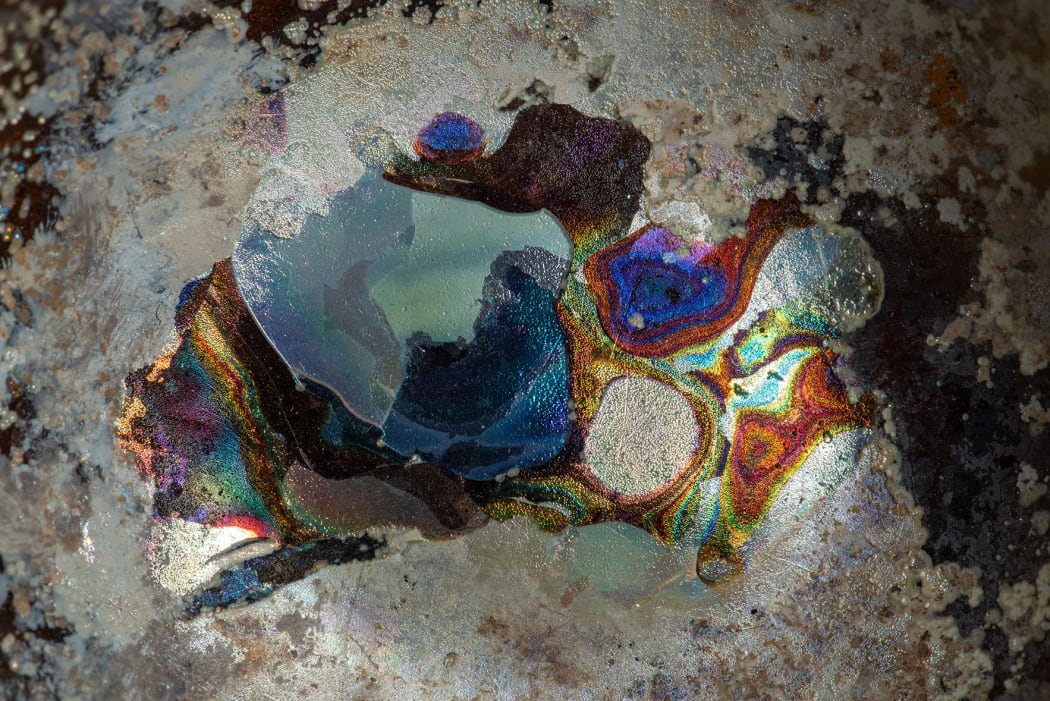IRIDESCENCE

The iridescence found on ancient glass is undeniably fascinating. The image above is a detail of iridescence remaining on the inside of a Roman amber glass cup. The photograph, so beautifully captured by our photographer, evokes so many questions....how was this effect created? Was it intended?

A ROMAN AMBER GLASS CUP
Eastern Mediterranean, circa 3rd - 5th century AD
Diameter: 7.7 cm
£3,500
Despite its beauty, and the unquestionable talent of ancient glassmakers, iridescence was not an intentional effect in antiquity. It is caused by alkali being leached from the glass by slightly acidic water present in soil. This causes the formation of fine layers that eventually flake off causing a prism effect on light bouncing off and passing through the surface. How much a glass object weathered depended mainly on burial conditions. These conditions are humidity, heat and type of soil the glass was buried in.

A ROMAN AUBERGINE AND WHITE 'MARBLED' GLASS BOTTLE
Eastern Mediterranean, circa 1st century AD
Height: 10.2 cm
£5,500
It is thought that the word 'iridescence' comes from Iris, the Greek goddess of rainbows, which reflects the rainbow-like effect that changes according to the angle from which it is viewed, or the angle of incidence of the source of light. What is so captivating about the iridescence of ancient glass is the interplay of lustrous, changing colours that take many different forms on the body of the glass, or even within the rim of a vessel.

DETAIL OF A ROMAN PALE BLUE GLASS CINERARY URN
Western Empire, late 1st - 2nd century AD
Height: 26 cm
£17,000
Even though iridescence in ancient glass wasn't intentional or present in antiquity, by the 19th century the iridescent qualities of ancient glass became so desired that the effect was replicated in modern glass. The first to do this was Louis Comfort Tiffany (1848-1933), the son of Charles Tiffany, the New York jeweller.
Tiffany began to develop his new style of glass, which would become known as 'Favrile Glass', after being strongly influenced by his travels around Europe in 1865. It was during these travels that the artist became inspired by the glasswork and mosaics of antiquity, and became devoted to the idea of restoring glass to its former glory.
Tiffany’s experiments with glass during the 1880s revolutionised iridescent glasses, because the colour is not just on the surface, but part of the glass itself. Examples of his work are now housed in museums around the world, including the Victoria and Albert Museum and the Art Institute of Chicago. Tiffany's work is testament to the outstanding durability of ancient glass, not just in terms of its miraculous survival but in aesthetic qualities and long lasting appeal.

